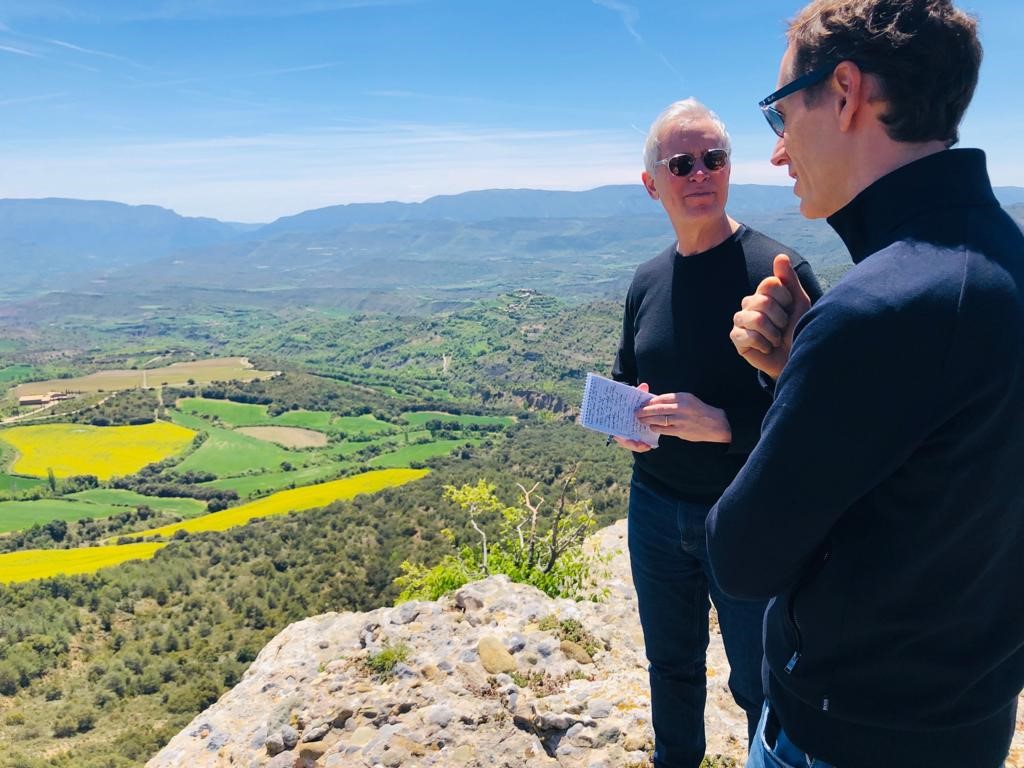PIRENE

The wine made from the ancestral variety Pirene, grown in the Sant Miquel de Tremp vineyards in the foothills of the Catalan Pyrenees, was among the 12 wines which most impressed Eric Asimov, the New York Times’s renowned critic, this year. The reason, according to the article "Our Critic's Best Wine Moments of 2019", is not only the grape's enological potential, but its ability to adapt to climate change.
So in honor of the occasion, we've decided to delve into the specific characteristics that made Pirene one of Mr. Asimov's top picks in his search for the world's finest wines.
Pirene, at home in the highlands
The county of Pallars Jussà in the province of Lleida lies in the northernmost corner of the Costers del Segre appellation of origin and is a small gem awaiting discovery. Here Pirene grows in Familia Torres's vineyards in Tremp, in the foothills of the Catalan Pyrenees, at an elevation of 950 meters.

[[{"fid":"21349","view_mode":"default","fields":{"format":"default","alignment":"","field_file_image_alt_text[und][0][value]":false,"field_file_image_title_text[und][0][value]":false},"type":"media","field_deltas":{"1":{"format":"default","alignment":"","field_file_image_alt_text[und][0][value]":false,"field_file_image_title_text[und][0][value]":false}},"link_text":null,"attributes":{"height":738,"width":1106,"style":"height: 334px; width: 500px;","class":"media-element file-default","data-delta":"1"}}]]Sant Miquel vineyard (Tremp, Pre-Pyrenees) where the pirene variety is cultivated..
The climatic conditions resemble those of continental climates and reflect the influence of the nearby Pyrenees. We're talking about a dry climate with areas marked by extreme conditions, such as below-zero lows in winter and highs of about 40 degrees Celsius in summer.
Familia Torres is continuing its project to revive ancestral varieties with the same enthusiasm as ever; a living journey that bridges archaeology and viticulture and contributes to recovering our winegrowing heritage and its forgotten identity.
Pirene 2018: The Wine
According to Asimov, "Great wines create great memories. They leave impressions to be pondered and stories to be told."

[[{"fid":"21350","view_mode":"default","fields":{"format":"default","alignment":"","field_file_image_alt_text[und][0][value]":false,"field_file_image_title_text[und][0][value]":false},"type":"media","field_deltas":{"2":{"format":"default","alignment":"","field_file_image_alt_text[und][0][value]":false,"field_file_image_title_text[und][0][value]":false}},"link_text":null,"attributes":{"height":768,"width":1024,"style":"height: 375px; width: 500px;","class":"media-element file-default","data-delta":"2"}}]]Eric Asimov, during his visit last May, with Miguel Torres Maczassek, in Tremp (Pre-Pyrenees). The wine critic was interested in the past, present and future of the winery, with special attention to climate change projects.
Asimov describes Pirene 2018 as "bright and lively, fresh, floral and herbal, a delicious, refreshing drink" and wonders why this variety was ignored for so long.
The variety has an electric color intensity, beautiful and brilliant, with high tannin levels. The nose displays bright, seductive, generous red fruit, and floral and herbal notes with a spicy nuance that gives the wine's structure a very expressive, organic quality. The palate unfolds elegantly, with surprising texture and finesse marked by bright, intense acidity that carries through to the finish.
Asimov visited Familia Torres's vineyards this past May to see how the family winery is adapting to the new climate reality and the steps it is taking to reduce carbon emissions. He later wrote about the visit in his article "Freshness in a Changed Climate: High Altitudes, Old Grapes." High-altitude vineyards and ancestral varieties are two of the measures Familia Torres is implementing as it adapts to a warming planet and the drought conditions that climate change will bring.
